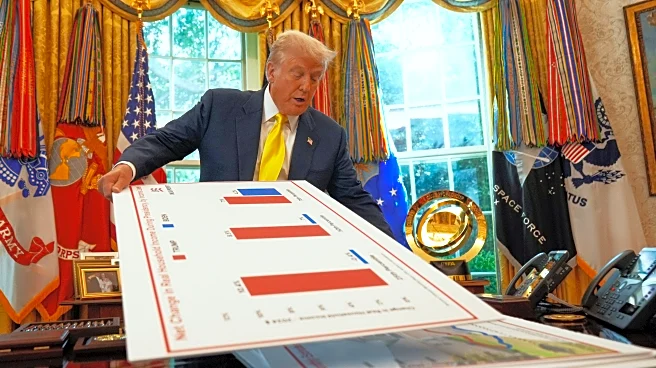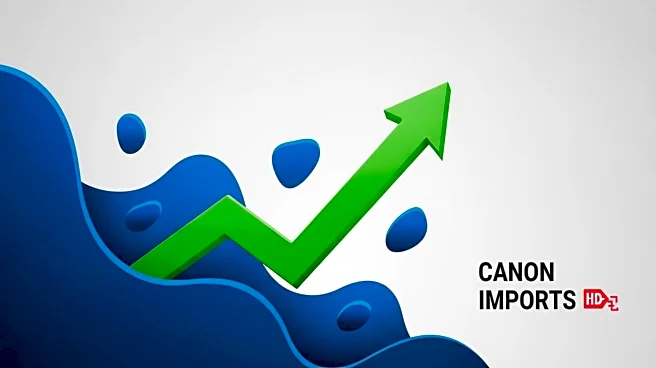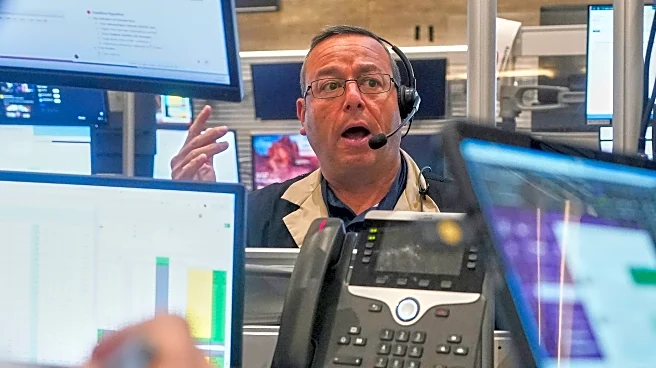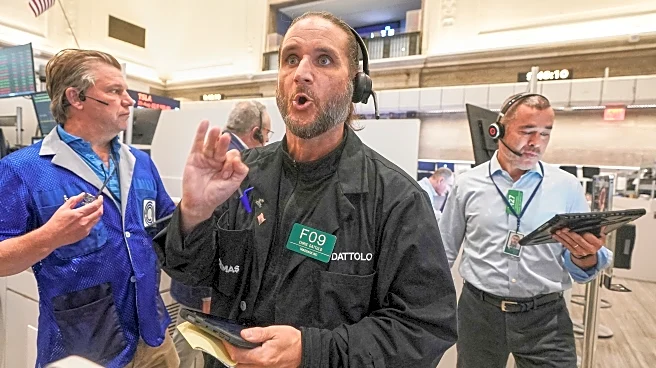What is the story about?
What's Happening?
The U.S. Commerce Department has revised the second-quarter GDP growth rate to 3.3%, up from the initially reported 3.0%. This revision is attributed to increased business investment in intellectual property, including artificial intelligence, and higher consumer spending. Despite this positive adjustment, the economic outlook remains clouded by ongoing tariffs on imports, which have affected various sectors. The Federal Reserve is expected to consider these developments in its upcoming policy meeting, with potential interest rate cuts on the horizon. The labor market shows mixed signals, with a slight decrease in unemployment claims but concerns over hiring due to tariff impacts.
Why It's Important?
The revised GDP figures highlight the resilience of certain sectors, such as technology, in driving economic growth. However, the broader economic landscape is challenged by President Trump's protectionist trade policies, which have increased import duties to historic levels. These tariffs are impacting corporate profits and consumer costs, with companies like Caterpillar and General Motors reporting significant financial hits. The Federal Reserve's potential interest rate cuts could provide relief, but the labor market's stagnation poses risks to sustained economic growth. The interplay between tariffs and economic indicators will be crucial in shaping future policy decisions.
What's Next?
The Federal Reserve's upcoming policy meeting may result in interest rate adjustments to address labor market concerns and inflation threats. Companies affected by tariffs are likely to continue lobbying for policy changes to mitigate financial impacts. Economists will closely monitor domestic demand and business investment trends to assess the economy's trajectory. The ongoing trade tensions and their influence on economic data will remain a focal point for policymakers and industry leaders.
Beyond the Headlines
The tariff-induced economic fluctuations underscore the complexities of global trade policies and their domestic repercussions. The focus on intellectual property investment, particularly in AI, suggests a shift towards innovation-driven growth. This could lead to long-term changes in the U.S. economic structure, emphasizing technology and intellectual capital as key growth drivers. The labor market's response to immigration policies and reduced job creation needs further exploration to understand its impact on economic stability.
AI Generated Content
Do you find this article useful?













